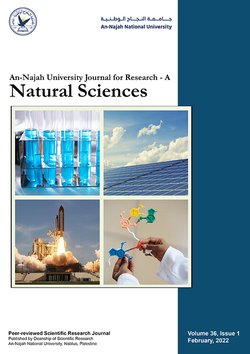Application of Water Allocation System Model to the Palestinian - Israeli Water Conflict
Authors:
Article info
2000-09-17
2001-09-01
2001-09-01
81 - 97
Keywords
Abstract
Water in the Middle East is a scarce resource. This scarcity is adding another dimension to the conflict between Palestinians and Israelis. This dimension is the conflict over the ownership and the distribution of water. In the late nineties experts both in and out of the region started to estimate the value of water in dispute. These ideas were elaborated in a computer model called Water Allocation System (WAS 3.3). The paper applied the WAS 3.3 model to explore the economic consequences of various water scenarios. The questions answered in this paper are related to the distribution of water in the region, the production of additional water to cover the growing demand, the provisions for dry years, the allocation of costs and benefits and price charge to the consumers of water. Variables in the various scenarios are population growth and land ownership and the ownership of water. In this paper, only implications and results from the Palestinian side will be discussed. Also, all the simulations in this paper are taken for the planning year 2010. The outcome of this paper shows that additional quantities of water should be made available to the Palestinians, regardless of the assumed scenarios in the different simulations. Also, the outcome shows that all parties in the region will gain if cooperation exists between these parties once the question of water rights is determined.
Jayyousi, A. (2001). Application of Water Allocation System Model to the Palestinian - Israeli Water Conflict. An-Najah University Journal for Research - A (Natural Sciences), 15(1), 81–97. https://doi.org/10.35552/anujr.a.15.1.670
[1]A. Jayyousi, “Application of Water Allocation System Model to the Palestinian - Israeli Water Conflict,” An-Najah University Journal for Research - A (Natural Sciences), vol. 15, no. 1, pp. 81–97, Sep. 2001, doi: 10.35552/anujr.a.15.1.670.
Jayyousi, Anan. “Application of Water Allocation System Model to the Palestinian - Israeli Water Conflict.” An-Najah University Journal for Research - A (Natural Sciences), vol. 15, no. 1, Sept. 2001, pp. 81–97. Crossref, https://doi.org/10.35552/anujr.a.15.1.670.
1.Jayyousi A. Application of Water Allocation System Model to the Palestinian - Israeli Water Conflict. An-Najah University Journal for Research - A (Natural Sciences) [Internet]. 2001 Sep;15(1):81–97. Available from: http://dx.doi.org/10.35552/anujr.a.15.1.670
Jayyousi, Anan. “Application of Water Allocation System Model to the Palestinian - Israeli Water Conflict.” An-Najah University Journal for Research - A (Natural Sciences) 15, no. 1 (September 2001): 81–97. https://doi.org/10.35552/anujr.a.15.1.670.
Application of Water Allocation System Model to the Palestinian - Israeli Water Conflict
المؤلفون:
معلومات المقال
2000-09-17
2001-09-01
2001-09-01
81 - 97
الكلمات الإفتتاحية
الملخص
Water in the Middle East is a scarce resource. This scarcity is adding another dimension to the conflict between Palestinians and Israelis. This dimension is the conflict over the ownership and the distribution of water. In the late nineties experts both in and out of the region started to estimate the value of water in dispute. These ideas were elaborated in a computer model called Water Allocation System (WAS 3.3). The paper applied the WAS 3.3 model to explore the economic consequences of various water scenarios. The questions answered in this paper are related to the distribution of water in the region, the production of additional water to cover the growing demand, the provisions for dry years, the allocation of costs and benefits and price charge to the consumers of water. Variables in the various scenarios are population growth and land ownership and the ownership of water. In this paper, only implications and results from the Palestinian side will be discussed. Also, all the simulations in this paper are taken for the planning year 2010. The outcome of this paper shows that additional quantities of water should be made available to the Palestinians, regardless of the assumed scenarios in the different simulations. Also, the outcome shows that all parties in the region will gain if cooperation exists between these parties once the question of water rights is determined.
Jayyousi, A. (2001). Application of Water Allocation System Model to the Palestinian - Israeli Water Conflict. An-Najah University Journal for Research - A (Natural Sciences), 15(1), 81–97. https://doi.org/10.35552/anujr.a.15.1.670
[1]A. Jayyousi, “Application of Water Allocation System Model to the Palestinian - Israeli Water Conflict,” An-Najah University Journal for Research - A (Natural Sciences), vol. 15, no. 1, pp. 81–97, Sep. 2001, doi: 10.35552/anujr.a.15.1.670.
Jayyousi, Anan. “Application of Water Allocation System Model to the Palestinian - Israeli Water Conflict.” An-Najah University Journal for Research - A (Natural Sciences), vol. 15, no. 1, Sept. 2001, pp. 81–97. Crossref, https://doi.org/10.35552/anujr.a.15.1.670.
1.Jayyousi A. Application of Water Allocation System Model to the Palestinian - Israeli Water Conflict. An-Najah University Journal for Research - A (Natural Sciences) [Internet]. 2001 Sep;15(1):81–97. Available from: http://dx.doi.org/10.35552/anujr.a.15.1.670
Jayyousi, Anan. “Application of Water Allocation System Model to the Palestinian - Israeli Water Conflict.” An-Najah University Journal for Research - A (Natural Sciences) 15, no. 1 (September 2001): 81–97. https://doi.org/10.35552/anujr.a.15.1.670.

Since 2019
Cite Score (Scopus): 0.8
Time to First Decision: 5 Days
Submission to Acceptance: 90 Days
Acceptance to Publication: 14 Days
Acceptance Rate: 22%
Call for Papers:
Sustainable Materials and Chemistry for Energy and Environmental Applications
Why should you
Publish With Us?
An-Najah National University
Nablus, Palestine
Nablus, Palestine
- P.O. Box
- 7, 707
- Fax
- (970)(9)2345982
- Tel.
- (970)(9)2345560
- (970)(9)2345113/5/6/7-Ext. 2628
- [email protected]
- EIC
- Prof. Waleed Sweileh
An-Najah University Journal for Research - A (Natural Sciences) by An-Najah University, Nablus, Palestine is licensed under CC BY-NC 4.0

